The Panzerschiffe. The Dusk of a German Genius
Version one. Deutschland uber alles!
“Pantsershiff” could go twice as far as any heavy cruiser of his time.
On the move, due to the unbearable hum of diesel engines, officers in the mess-room communicated with the help of notes. These are the fun, but unimportant features of the life of the German “pocket battleship”.
The essential feature of the pickpocket was his weapon. The ship, similar in size to the “Washington cruiser,” carried a battery of six 283-mm guns, housed in two turrets of GK weighing 600 tons each! This is not counting the eight six-inch and the battery flak "caliber 88 or 105 mm.
In their power, the 28 cm SK C / 28 cannons occupied an intermediate position between the GC cruisers and battleships. Three hundred kilogram shells pierced the defense of Washingtonians like foil. The outcome of the battle was predetermined. Light cruisers could be just a single hit.
The second feature of “Deutschland” - the firing range. No, with a capital letter: Range!
The 28 cm SK C / 28 is one of the most long-range naval artillery systems (over 36 km at elevation angles of 40 ° trunks).
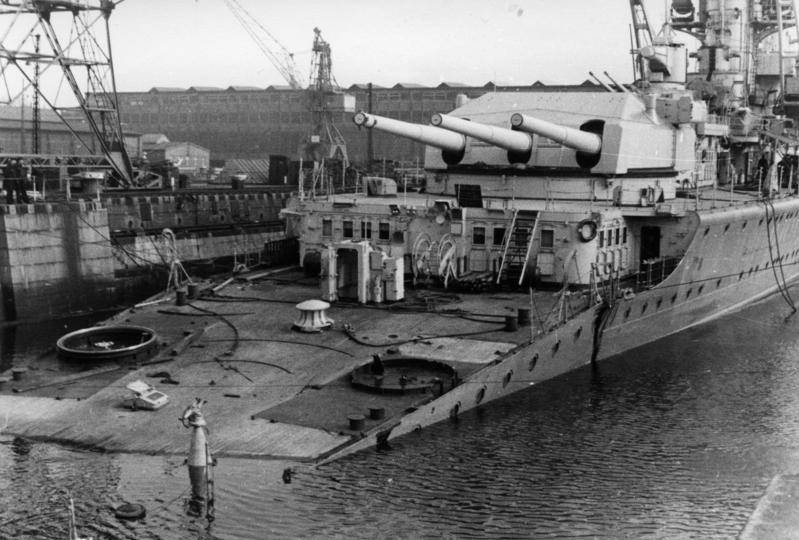
Everything was fine in these guns. Magnificent ballistic characteristics successfully combined with high barrel survivability (340 shots - 3 full ammunition).
Legendary German quality literally in everything. The fastening of the hull elements was duplicated by welding and simultaneously by riveting. Pantzershiffe was not built for the “Baltic puddle”: they were to plow the oceans, in time with the crests of the sea under the tent of bad weather, along convex lines of latitudes and longitudes.
The relatively low speed (27-28 nodes) was partly compensated for by the phenomenal autonomy and the highest dynamics. Set speed and the ability to remove from the anchor in minutes - when the “normal” cruisers took half an hour — an hour to separate the pairs.
“High-speed” engines for warships were made by MAN: eight 9-cylinder diesel engines with a maximum power of 7000 hp. In one of the raids, the “Panzershiff” passed almost without stops 46 419 miles per 161 day. Unique ship. There was enough fuel on board for the 20 000 for miles of travel.
The Anglo-Saxons tied Germany with a mass of restrictions: the displacement of ships is no more than 10 thousand tons, the caliber of no more than 11 inches. German engineering genius brilliantly overcame the “Versailles barrier”, having managed to get the maximum benefit in the seemingly impossible conditions.
Build a super-armed ship, almost a battleship, in the dimensions of a heavy cruiser.
Having met the English squadron at La Plata, the “Admiral Graf Spee” stood alone the battle against the three British cruisers. They say he was stronger than each of the opponents separately? So it is in this the merit of its creators!
The second version is rather skeptical
Upon learning of the approach of “Rinaun”, the Germans immediately flooded the “Panzershiff” on the Montevideo roadstead.
The appearance of “Rinaun” is described as a doomsday. As proof of the absolute hopelessness of the situation in which “Spee” found itself.
Come on, where did the panic come from?
What scared the brave fascists?
Veteran 1916 of the year with six GK guns? Wow. If you look objectively, “Rinaun”, waiting for “Spee” at the exit from La Plata, is not yet the most formidable of possible opponents.
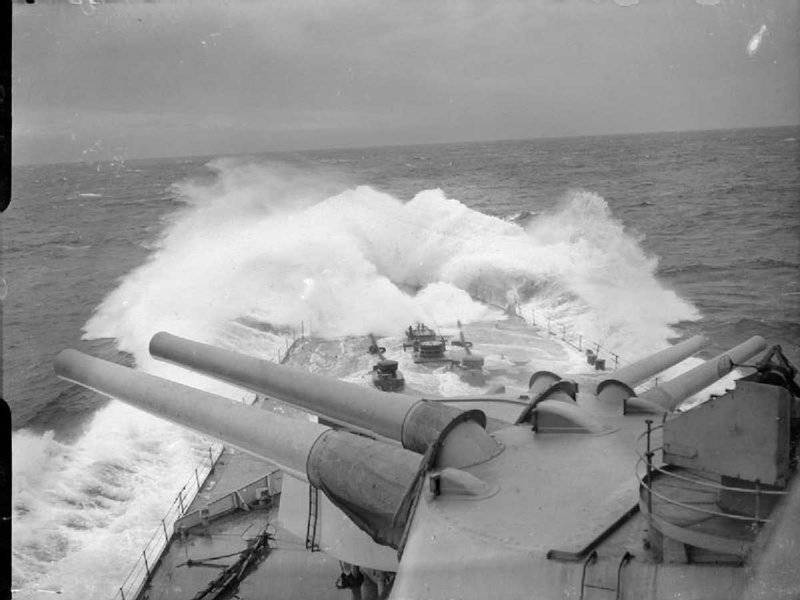
If the Germans were offered instead of “Rinaun” “Hood” or French “Dunkirk”, what would they do then? Fought for a place in the boats?
It's not about the twists and turns stories, and about more simple things. Barely confronted with the shadow of “battleship”, a highly protected ship with a standard displacement of 25 + thousand tons, armed with 15 “artillery,” the fascist “wonder-yudo” fell on its side and died by itself, not even daring to join the battle.
Naturally, no “Rinaun” was close - the Germans had enough horror stories from the British and the Cumberland TKR silhouette, mistaken for the battle cruiser
The whole concept of the German “pocket battleship”, which, due to a unique set of characteristics, could dictate the rules of sea battles, is idle chatter. The use of the word “battleship” in relation to “Deutschland” is as ridiculous as to stick with a paper boat in an elite yacht club.
When meeting with the classic “ships of the line”, the behavior of the German “pickpockets” did not differ from the behavior of ordinary heavy cruisers. They fled, remembering all the saints. The attack on the compound or the convoy, which included the battleship, as well as any attempt to resist in general, was a suicide for Deutschland. With a triple difference in the mass of the projectile (300 vs. 871 kg) and incomparable security, there was nothing to hope for.
15 inches is a scary argument. It is no coincidence that even the Scharnhorst from Gneisenau ran away from the “outdated” British “Rinaun”. Yet another “miracle” of German engineering: non-contourists, who suffered from insufficient firepower until the end of their days.
As for the “pickpockets,” everything is quite clear with them. To deceive the laws of nature, having built with a limited displacement something resembling a LC, failed. But this is not a reason to be upset. The real reason is different:
Where with the main caliber fate awaits him.
Unlike cruisers with traditional boiler-turbine power plant, capable of escaping from danger at speeds of 32 — 36 knots, the German Deutschland could not crawl away from the enemy. Salvation from the British LKR was in principle impossible: “Ripals” and “Hood” are much faster. When meeting other battleships, not enough high speed has always played against the Pantshershif.
Is it possible to guarantee a successful escape from “Queen Elizabeth”, having a difference in the speed of the 2-3 node? With that incomparable difference in firepower, when just one hit could immobilize (if not finish off) the pickpocket? Remember, what kind of destruction caused a hit 15-inch projectile in LC "Julio Cesare"!
By the way, if you remembered about the Italians, then their upgraded battleships, preserved from the time of the WWI, cut the wave at 28 nodes.
Pre-war French LC “Dunkirk” and “Strasbourg” made almost 30 nodes.
And suddenly “Deutschland”, a brilliant German invention. Which, with a low security level corresponding to all the TKRs of the pre-war period, was inferior in speed (with a huge margin!) To all cruisers and even some battleships. The concept of Admiral Zenker “is stronger than those who are faster, faster than those who are stronger” did not work in practice. The German super-cruiser, for all its uniqueness and a number of undeniable merits, was a useless combat unit.
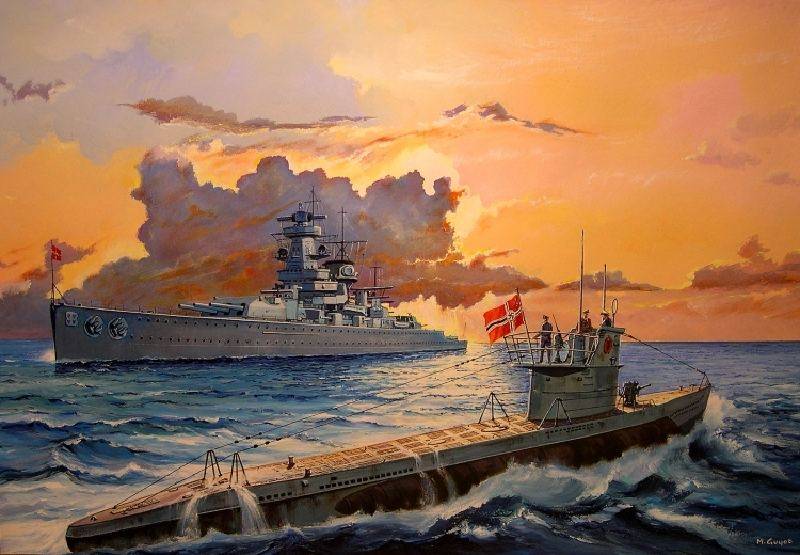
How were you going to fight in such conditions?
If we reconsider the area of application and present the “Pantsershiffe” in the role of “big gunboats” in the Baltic, then one of the main advantages is lost in a limited theater of operations - a breathtaking cruising range.
Accept "Deutschland" as an experimental ship "breakdown of the pen" for the German designers who were affected by the decisions of Versailles, prevents the fact of their serial construction. Three corps - one after another. The Germans invested in them seriously, in the conditions of a clear lack of resources for military shipbuilding. Throughout the first half of the 1930's. (before the laying of the “Hippers” and “Scharnhorst”) these ridiculous ships were considered the mainstream and the main striking force of the Kriegsmarin.
The battle of La Plata demonstrated the essence of “pocket battleships”.
The heroic battle of the German raider with three cruisers (two of which are light) dims at the mention of a simple fact - the mass of the “Shpee” airborne volley (2162 kg) exceeded the total mass of its opponents volley.
The result is a grueling skirmish. An hour later, closer to 7 in the morning, the German “wundershiff” tried to escape from the battlefield, but, driven by a sense of duty, he nevertheless returned and continued to fight.
Instead of a quick and easy victory over the Exeter (objectively, the weakest and most primitive heavy cruiser armed with only six GK guns), a drama played out that cost the very life of the pickpocket. The damaged “Admiral Graf Spee” huddled at the mouth of La Plata, never having managed to finish off his opponent.
It is worth noting, “Spee” in technical terms was the best among the “Panzershiff”. Each of the three ships, “Deutschland-Lutzow”, “Admiral Scheer” and “Admiral Graf Spee”, formally being representatives of the same type, had significant differences in design. So, the vertical booking weight of the first two pickpockets differed by 200 tons. “Graf Spee” had even more massive protection. For the manufacture of bulkheads on it used steel of better quality, grade K n / a (Krupp neue Art), or "Wotan".
And if it was even hard for him, then how would his less accomplished brethren look like in that battle?
There was such a nuisance: the average caliber of “pickpockets” - eight 149 caliber mm guns in single-unit installations, despite their high ballistic characteristics, did not have a central fire control station. Because of their military value was questionable. And the towers themselves and 100 people. their servants turned into useless ballast. But who is to blame except the fascists themselves?
Worse, the walls of the SC towers provided protection only against water splashes. As a result, head “Deutschland” received non-illusory injuries during a fire contact with a Soviet bomber. In the 1937 year, being on raid on. Ibiza, the cruiser was hit by the Republican “SB” under the control of Nikolay Ostryakov: as a result of two 50-kg (according to other data, 100-kg) bombs, fires and the subsequent detonation of 6 “SCs” killed two dozen crew members over 80 were injured.
So the enthusiasm for the German engineering genius is an unverified myth. If we consider, for example, the Japanese fleet, then the problem of “artificial restrictions” was solved there in much more elegant ways. First, as elsewhere, the limit was somewhat violated: the standard displacement of all “Takao” - “Mogami” exceeded the established values by 15-20%. Japanese and German cruisers had the same size. As a result, the “Japanese” - speed on 35-36 nodes and weapons from 10 guns main caliber. Plus universal artillery. Plus the famous torpedoes. Even taking into account the 2,5 multiple differences in the mass of 8 "and 11" shells, ten barrels in the five towers with twice the rate of fire provided similar fire performance. And a quick adjustment.
The prohibited displacement surpluses were “dumped” in a cunning Japanese way - in peacetime “Mogami” was carried by “fake” six-inch towers. This is the level! This is a real genius and ingenuity.
And many say: Germans. Engineering thought. In paradise - the mechanics, in hell - the police.
“Pocket battleships” are a fundamentally unfortunate project: from their very concept to individual technical points in the realization of an idea. A project that devoured the unmeasured amount of funds without any clear result.
Solution
Let everyone take it on their own. Contrary to popular belief, the truth does not lie in the middle, which is why it is always so difficult to find it. The author himself believes the second option is correct. And not only because he is convinced Germanophobe. The main evidence of the high combat capabilities of the Panzershiff is the refusal to continue their construction. Brilliant idea of development has not received.
The following “pickpockets” with enhanced armor and increased w / w and 20 thous. Tons, known under the designation “D” and “E”, were dismantled on the stocks in 1934 year, five months after laying. The foundation was used to build the Scharnhorst and Gneisenau.
We summarize what was said: the Germans threw all their "genius" out of their heads and began building an LCR with a familiar set of characteristics for ships of this class (except for insufficient firepower).
For the role of a heavy cruiser, another project was chosen - “Admiral Hipper”, also with steam turbine power plant and all the “classical” attributes of the TKR of that period.
Based on materials http://wunderwaffe.narod.ru.
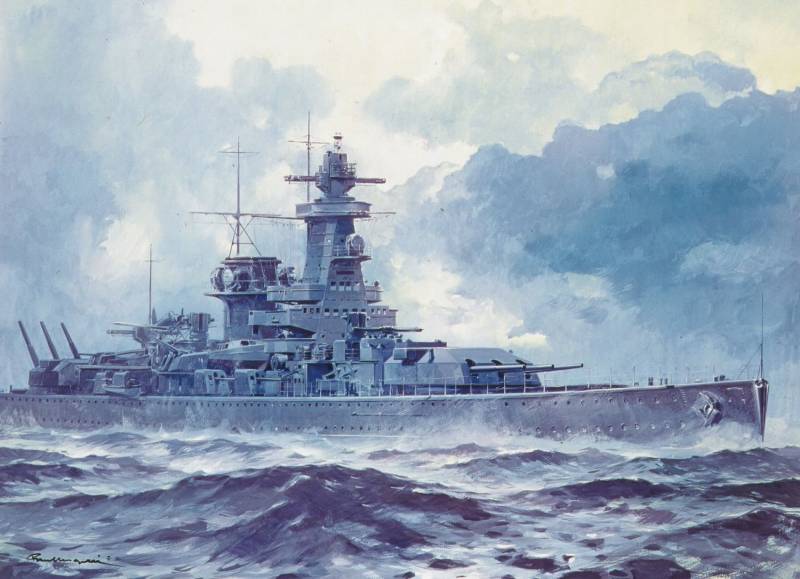
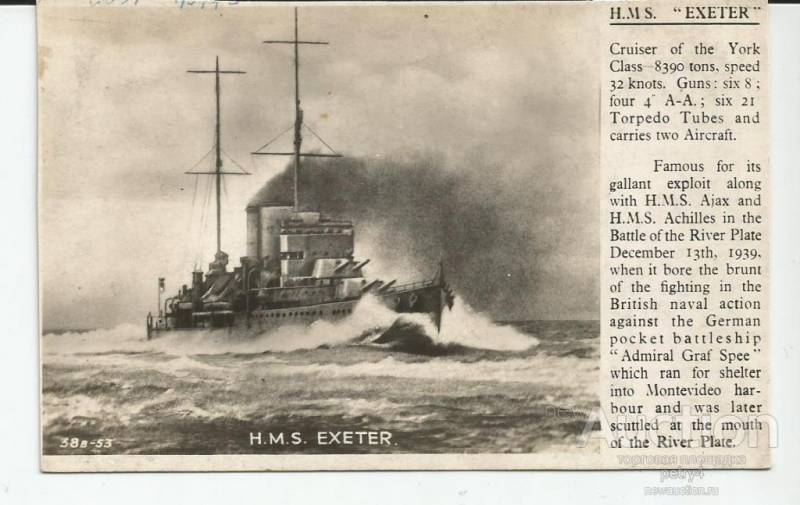
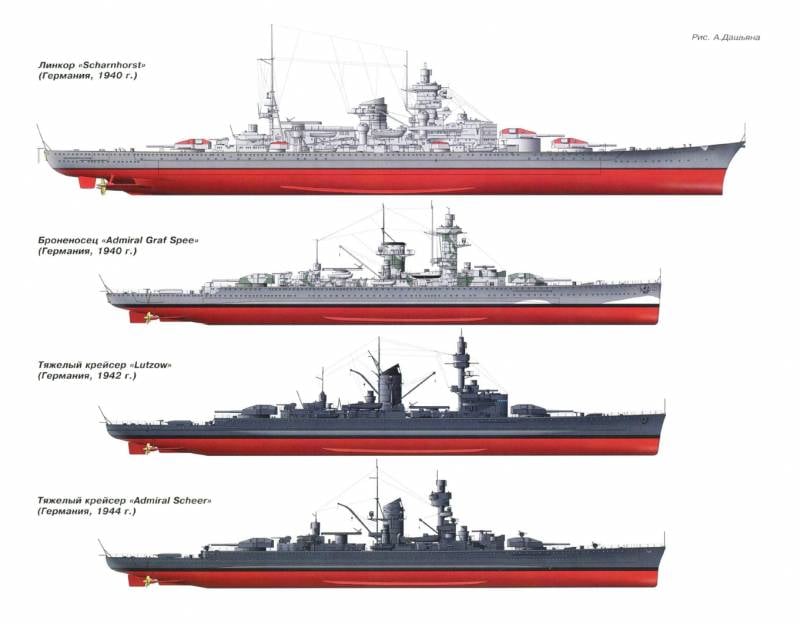
Information